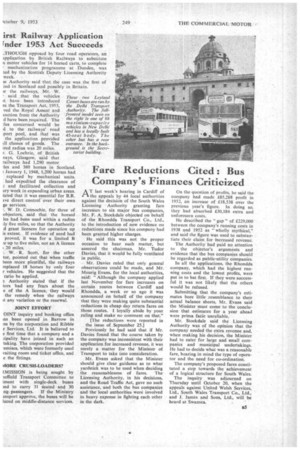irst Railway Application rnder 1953 Act Succeeds
Page 39

If you've noticed an error in this article please click here to report it so we can fix it.
_THOUGH opposed by four road operators, an ipplication by British Railways to substitute a motor vehicles for 14 horsed carts, to complete mechanization programme at Dundee, was ted by the Scottish Deputy Licensing Authority week.
ir the railways, Mr. W.
said that the vehicles it have been introduced re the Transport Act, 1953, ved the Royal Assent and inction from the Authority d have been required. The :les concerned would be d to the railways' road port ,pool, and that was the application provided dl classes of goods. The ired radius was 20 miles. r. G. Lochrie, of British vays, Glasgow, said that railways had 1,290 motor :les and 380 horses in Scotland. January 1, 1948, 1,200 horses had replaced by mechanical units. had expedited the clearance of a and facilitated collection and cry work in expanding urban areas. tated that it was essential for B.R. tve direct control" over their own ge services.
W. D. Connochie, for three of objectors, said that the horsed les had been used within a radius .137 five miles, so that the Authority
d grant licences for operation up is extent. If evidence of need had proved, it was for a limited B :e up to five miles. not an A licence 1 20 miles.
W. R. Scott, for the other tor, pointed out that when traffic been more plentiful, the railways replaced 18 horses by only four r vehicles. He suggested that the ratio be applied.
a Authority stated that if the tors had any fears about the e of the A licence, they would the remedy when the railways it any variation or the renewal.




























































































